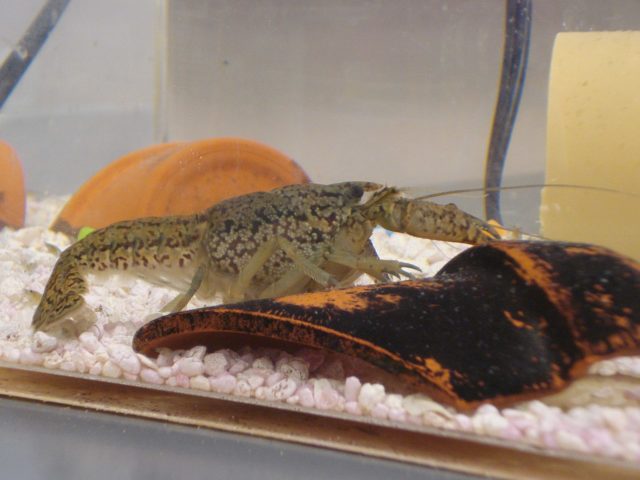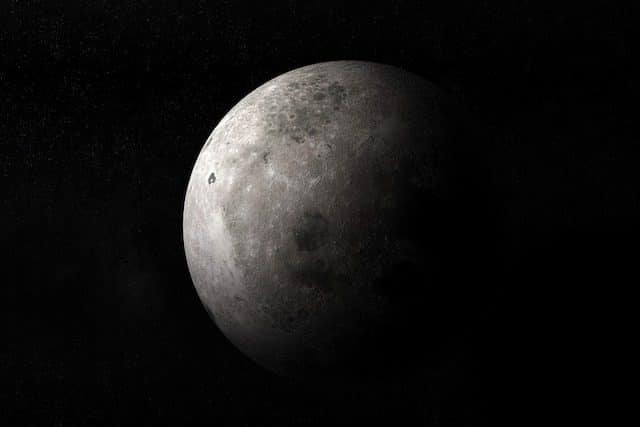They say that when you lose something, it’s the last place you look, which makes sense because you won’t look anywhere else. It’s just that you lost it, though. When it comes to discovering something new, there’s no limit to where you can find it. Sometimes it makes sense, but sometimes new things are discovered in the most unexpected ways and in the most unexpected places.
10. The world's deadliest toxin was found in sausage

Botulism has become unusually widespread these days due to Botox . The whole weight of how dangerous it is as a toxin is lost because it sounds like that every day. But the truth is that botulism is literally the most toxic substance in the world. One nanogram per kilogram is enough to kill a person. One pint can kill every person in the world. The fact that improper canning or bottling foods can cause botulism should probably scare more people than it actually does, but fortunately we live in an age where it is relatively rare. Only about 110 people suffer per year in America.
For something so deadly, it's surprising to learn that it wasn't discovered in a lab or by any scientific means at all. It was first discovered in Europe in 1735 in some sausages. The name comes from the Latin word for " botulinum ", which actually means sausage.
9. Marbled crayfish from a German pet store

The dangers of invasive species can be quite dramatic. Just look at what managed to do it rabbits in Australia. Florida cities will go into lockdown as soon as anyone gets word that This area is inhabited by giant african land snail . And there is a view cloned crayfish , which are now raging in Europe and Africa.
All marbled crayfish are female, which is usually a problem for most animals, but not for these crustaceans. They are able to reproduce asexually and clone themselves, and they do so extremely prolifically. They are literally compared to tribbles from "Star Trek" for their ability to reproduce. In the wild, one crayfish can become three hundred in three months. It's easy to see why they spread across the continent and eventually ended up in Africa. So where do they come from?
Amazingly, the entire species can be traced back to a German pet store. The store had a few Texas crayfish, but one was a mutation; total crap. And it spawned. People bought them as pets and started releasing them into the wild, and they spread like wildfire. They are the only known species of crustacean that can reproduce asexually. It took them 25 years to cover Europe and reach another continent.
It is worth noting that they are already sold in North America. They can be found in Japan, Madagascar and Canada, and who knows how far they will spread and whether they will be spared anywhere in the world.
8. The oldest rock in the world was found on the Moon

Most of us aren't very interested in rocks, but there's some curiosity value, if nothing else, in hearing about the oldest rock. And a rock that's four billion years old sounds pretty remarkable, since the Earth itself is only 4.5 billion years old.
A rock that old could come from literally anywhere in the world, because isn't the entire world made of rock? Despite this, there is actually a surprising origin story, as the oldest rock in the world wasn't actually found on or in the world. It came from the moon.
The Apollo 14 mission took several rock samples from the moon, including a tiny two-centimeter fragment , lodged in a larger rock. Research dates the piece back four billion years, and it originated here on Earth, not on the moon. Its composition contained quartz , zircon and other minerals that, by their chemical composition, indicate that it came from here, not there. The asteroid's impact with the Earth would have thrown it into space and sent it to the Moon. Its presence means that perhaps a number of the craters and pockmarks on the Moon's surface were caused by rocks that came from Earth, and there may be many more Earth rocks there, too.
7. Mount Mabu was discovered on Google Earth.

One of life’s great little pleasures is discovering a new place. A great new restaurant, a cool club, even a small waterfall in a secluded spot in the woods. But when we say “new,” we usually mean a place we’ve personally never been, not a place no one else has ever been. Every place in the world has already been discovered, right? Well, maybe not. For example, Mount Mabu in Mozambique, which is completely covered in rainforest, was only discovered by outsiders in 2005. And only thanks to Google Earth .
The tropical forest covered huge 27 square miles , making it something of a significant piece of land that had been overlooked for so long. The locals were obviously well aware of the mountains and rainforests, but scientists and geographers simply had no idea. The area is almost completely inaccessible, and the history of warfare in the area meant that outsiders rarely approached it.
Biologist Julian Bayliss only discovered it because he was deliberately using Google Earth to find uncharted areas. There were no maps or information about the forest or mountain, making it something of a geographic unicorn.
6. A new species of sea urchin has been discovered on eBay

It's pretty well known that eBay was launched as a way for the founder's wife to better collect Beanie Babies, but those are far from the only rare items that have made their way onto the online auction site. One of the more remarkable examples discovered was a type of sea urchin , which had never been found anywhere before.
Tiny colorful hedgehog named Coelopleurus exquisitus Simon Coppard of the International Commission on Zoological Nomenclature at the Natural History Museum. He regularly receives photos via email from people who have found a sea urchin and want to know what it is. However, the eBay find was the first time he had discovered an entirely new species and named it himself. But with 15,000 new organisms identified each year, there’s a good chance he or anyone else will stumble across something new… even if it’s not on eBay.
5. Phosphorus was discovered while trying to extract gold from urine.

Imagine you're an old alchemist with no idea how anything in the universe works. But man, you love gold. Turning lead into gold hasn't worked yet, and you need a new plan of attack. What looks like gold that might have gold in it? If you guessed urine, you'd be transported straight back to the late 1600s.
Hennig Brand tried to extract gold from urine, as is usually done, and collected allegedly 1500 gallons of this substance. According to his own method, he boiled it down to a "honey-like consistency," which must have created a wonderful smell in his home where he worked. The process of boiling urine in huge quantities did not yield him any gold, but he did find a waxy substance that inexplicably glowed in the dark. Brand discovered phosphorus .
4. Male octopuses were not discovered until 2002.
In the world there are about 300 species octopuses, and some of them are less well known than others. The unusual octopus was discovered sometime in the 1800s, at least the females, but only in In 2002 We finally found the males. How could the males of a known species go undiscovered for so long? Where did we finally find them? It turns out they were never hidden. They were found right before our eyes.
The female sleeper octopus can get quite large. They get their name because they can look like a living blanket floating on the water, and can reach two meters in length, or about six feet. But the male? They are about 2.4 centimeters long. The female can outweigh the male by 40,000 times . So the reason we've never seen males before is because they were so damn small, and scientists have never seen such a dramatic example of size disparity between the sexes before. And yes, our minds immediately went to what reproduction looks like, but we're not sure that's the image we want to dwell on.
3. Graphene was discovered using duct tape
Graphene is called " the miraculous material of the future ", and people are suggesting that it could literally change the world. It's a single layer of carbon atoms, and its strength and electrical properties really do have incredible potential to change many types of industry. And if you think about it, this wonder substance was discovered completely by accident because some guy was playing with magnetic tape .
Andre Geim and Konstantin Novoselov won the Nobel Prize in Physics for their discovery of graphene, and they isolated it from graphite, also known as pencil lead, by holding a layer together with tape. They repeated this several times, getting thinner and thinner layers of carbon until they got to a very thin layer that allowed them to isolate a layer of a single atom of graphene.
2. The grave of Saint Monica was discovered by children playing football.

The search for relics of religious significance has been going on for centuries, and is even a major part of pop culture. After all, where would Indiana Jones be without the Ark of the Covenant or the Holy Grail? Less adventurous, but no less remarkable, was the discovery of St. Monica's tomb, and Harrison Ford was nowhere to be seen.
Outside the city Ostia Antica a couple of boys interested in playing football, or soccer for our American readers, decided to dig a hole for a goal post (although some reports say one of the boys first tripped over a stone). before digging).
In any case, they found the stone on which Monica's tombstone was inscribed. The boys had discovered the long-lost tomb of a saint in a deserted field.
1. A fish that became extinct 66 million years ago has been found on a South African fishing boat.
Have you ever heard a story about a person thought to be dead, only to reappear years later? It's rare, but it does happen. Sometimes the person fakes their own death, or simply runs away and goes offline. Sometimes it's even the result of amnesia. Whatever the reason, it's very dramatic when the person reappears. Now imagine that 66 million times. This is a story about coelacanths , a fish that was thought to have gone extinct 66 million years ago until it was discovered on a fishing boat.
Fossils of coelacanths date back more than 410 million years. It was 66 million years ago that they seemed to have reached their natural end, and let's be honest, 344 million years is a long way for any fish to go. But that wasn't the end of this ancient species.
It was 1938 when a curator at a natural history museum in South Africa received a call that a fishing trawler had docked with a load of fish that she might be interested in looking for interesting specimens. She looked around and found an unusual creature with blue fins, five feet long, unlike anything she or the fishermen had ever seen.
The curator tried to get a fish expert to examine the specimen, but the timing was bad and it took him almost two weeks to get her message. When he did, he was so excited he even offered to look for at the dump fish guts, which by that time had already been discarded.
The fish, of course, turned out to be a coelacanth. More specimens were found after that first discovery, but not in large numbers. By 1975, was caught total 84 individuals . But that's still quite a lot for a fish that should have gone extinct before Tyrannosaurus.













Оставить Комментарий